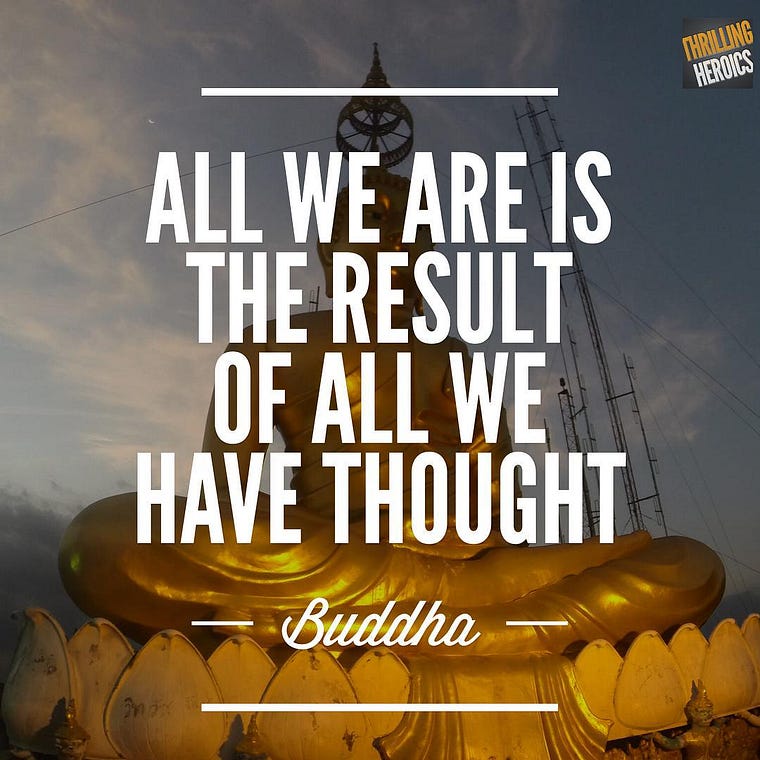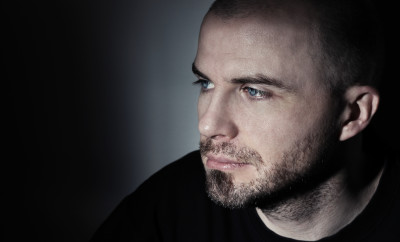Your thoughts influence your emotions, and your emotions influence your actions.
Like the Buddha said:
“All that we are is the result of what we have thought. The mind is everything. What we think, we become.”
If you think you’re going to fail. You’re going to fail. If you think you’re not good enough, that’s the life you’re going to attract, proving to yourself that you’re not good enough.
You Have the Power to Change Your Beliefs
A belief is created by repeating a thought, over and over again. Our behaviors are formed in the same way. We strengthen neural pathways by repeating the same thoughts and behaviors.
Think of a neural pathway like a canvas, and you are the paintbrush. The more you repeat the brush stroke, the thicker the paint will get. The more you repeat a thought or behavior, the stronger the neural pathway will become in strengthening that thought or behavior.
Let’s say every time you’re stressed, you smoke a cigarette to relax. This action creates a brain pathway, which will trigger you to want to smoke every time you feel stressed.
But here’s the thing — at any moment, you can reverse these thoughts. You can reverse your behaviors. At any moment, you can choose differently. You can choose to create new neural pathways.
Instead of grabbing a cigarette each time you feel stressed, what if you replaced that with going for a run, stretching, meditating, or calling a friend — soon, when you begin to feel stressed, your brain will trigger you, craving a run, meditating, or calling a friend.
At Some Point, We All Play the Victim
I can’t quit eating, smoking or drinking. It’s just too difficult. I can’t get this business going. I can never follow through. I’ll never close my first deal. People just don’t respond to cold calling, webinars, email lists, [fill in the blank.]
Let Me Know If This Is Where You’re At Right Now
You feel overwhelmed and discouraged after embarking on your new business, blog, or goals, and you give up; you stop taking action. You quit.
You always quit. This is what you tell yourself. You’re great at starting projects, but you can never finish them. It’s not your fault. You’re just not capable of following through.
Or How About This?
You walk into a bar, see the most handsome guy, want to approach him, and don’t.
You never approach him. You’re not good with meeting strangers. You freeze up. You become awkward. You don’t know what to say. So why even try if you already know the outcome?
You Have to Know Your Beliefs Before You Can Change Them
Do you have trouble with following through on your goals? Are you the person who never approaches the man? Why?
Let’s say you never approach the attractive guy. Here’s why:
Every time you see an attractive guy you want to talk to, you start thinking, “I’m shy. What would I have to say of interest? The guy talking to him right now is more attractive than me. He is a 10, and I’m a 5. Why bother?”
The above thoughts begin to play like a broken record. You might not even be aware of them. They’re the unconscious background playing throughout your day.
Everyone has thought patterns, a series of thoughts that they repeat every day. A lot of the time, they’re negative, and most of the time, we’re unaware of them.
You can’t change something you’re not aware of.
Learn to View Your Charged Thoughts and Emotions Objectively
To become aware of and change your thoughts, you need to develop your inner observer. Your inner observer is that part of you that observes and notices your thoughts objectively. This is different from your inner critic.
Let’s say you’re on a mastermind call, you’re sharing what you’re working on, and you realize that you just said something that can make you appear really stupid.
Your inner critic activates your emotions and remarks on your flaws. “I’m so stupid! Why did I just say that? They’re going to realize I’m a complete beginner.”
Your inner observer notices your thoughts, including your self-criticisms, and detaches from the anxiety and other uncomfortable emotions that they’re prompting. This allows you to notice your thoughts and work with them from an objective viewpoint.
Instead of thinking, “I just said something so stupid! They’re going to think I’m a fraud.” Your inner observer may notice, “What I just said doesn’t make any sense. They’re going to realize I’m still learning this, and that’s okay. Now that they know that I’m struggling, I can tell them that I’m still trying to figure this out and ask for help. I’ll be able to make a lot more progress now in a shorter amount of time.”
How to Develop Your Inner Observer
Make it simple. Give yourself 5 minutes once a week. You will simply sit for 5 minutes, and notice your thoughts. Write down what you notice.
If you want to speed up this process, carve out 5 minutes a day, and try this for a week.
You’ll notice that you have thought patterns.
I often think about:
- What I have to do or should be doing
- How I want to be more in the present moment with my family and friends, instead of thinking about or doing work
- My energy levels, and how I should be taking better care of myself so I won’t be craving caffeine
- How I want caffeine
My most prevalent thoughts are about my to-do list. They start right when I wake up, not in a productive, “Let’s get going!” manner, but in a nagging, “You should have already done this” manner. When I allow those thoughts to prevail in the morning, they drag me down. My morning and my energy start on a low note.
My mornings don’t have to start out like this.
Once You’re Aware of Your Thoughts, You Can Change Them
Once you catch your thought, you can confront it, replace it, apologize to yourself, and commit to change. This is called the 5-Step Process.
- Catch your thought.
- Confront your thought.
- Replace your thought.
- Apologize to yourself.
- Commit to change.
The 5-Step Process helps you to create new neural pathways, forming the thoughts and behaviors that you want to manifest.
If you want more in-depth practice on the 5-Step Process, you can join me in the 31-Day Self-Love Diet Writing Challenge. It’s a free event. You can sign up here, and you’ll receive 31 Self-Love Diet writing prompts for 31 days in a row, as well as have access to a free, private Facebook group for accountability and support.
The Self-Love Diet expands beyond the 5-Step Process. More specifically, it’s exploring your relationship with yourself through the lens of your spirit, body, emotions, thoughts, relationships, culture, and world.
It increases your self-awareness, your emotional awareness, and your self-confidence.
I know, the term Self-Love Diet sounds woo woo.
But here’s the thing — being in charge of your life, not playing the victim, it boils down to:
- Becoming aware of your thoughts and emotions
- Being okay with experiencing and feeling all of your emotions
- Having the power to choose how you respond to your emotions
If you can do the above three things, you can begin to create the thoughts and feelings that you want to experience. You’ll be able to successfully change your behaviors, and you’ll even be able to change long-held, harming beliefs.
How you view yourself, how you interact with the world, and how others perceive you — you have the power to shape this.
You have the power over how you experience each moment of your life. You always have a choice.






